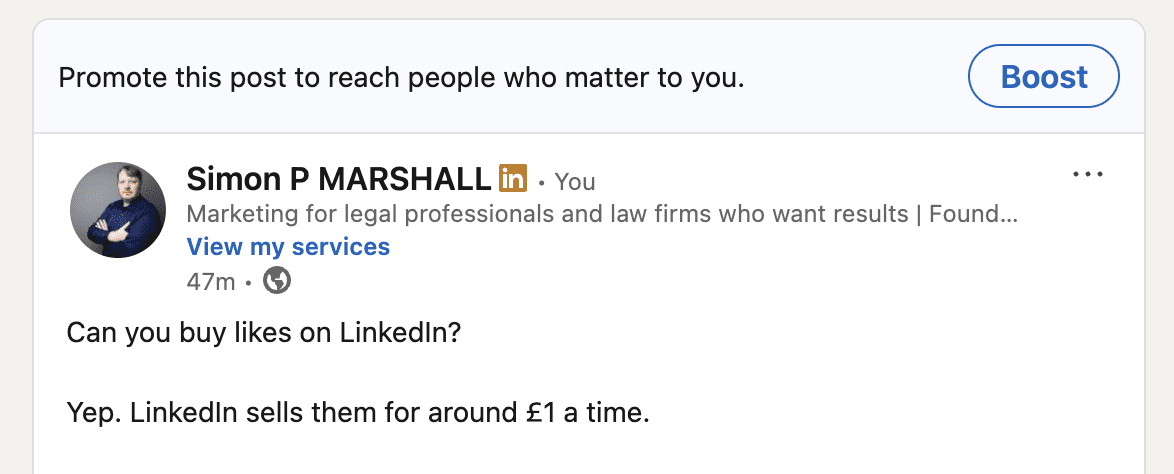What is Google’s Consent Mode version 2?
Google’s Consent Mode v2 is a compliance tool that helps firms meet their General Data Protection Regulation (GDPR) and other privacy requirements.
It’s an advance and you’ll need to actively do something about it in order to prevent it impacting on your website rankings.
The penalties for not complying are already happening – so your competitors are taking advantage of you not having complied by getting higher rankings and more traffic. More traffic means more leads, so compliance is a commercial issue.
How does Consent Mode v2 work?
Consent Mode v2 works by intercepting requests to Google tags and checking whether the user has granted consent for the specific data collection. If consent has been granted, the tags will function normally. If consent has not been granted, the tags will be blocked from loading or collecting data.
Put in plain English, it puts consent where it should always have been:
“Do you want to allow cookies on this website?” is something we all deal with every day. But often, cookies have already been used by the time this notice is served.
Consent mode makes sure that this consent is granted before cookies are used.
In plain English, what does Consent Mode 2 mean?
Imagine you’re visiting a website that wants to use cookies to track your browsing behaviour and present you with targeted, personalised adverts. With Consent Mode v2 for Google Ads deployed, that website will now ask for your explicit consent before doing so.
Think of it like a digital consent form where you can choose whether or not to allow the website to collect your data. If you decline, the website won’t be able to track your activity and serve you personalised ads. It will still serve you generalised adverts (this isn’t an advert blocker) but they will often be less relevant to you as a result of your opting out.
This new Google mechanism ensures that user privacy is respected and that tracking only occurs with explicit consent. It’s a step towards a more transparent and user-centric approach to online advertising.
It’s what the original cooker banners were trying to achieve but often failed to do.
How does Consent Mode work in simple terms?
Here’s a simplified breakdown of how Consent Mode v2 works:
- User visits a website: The website presents a consent pop-up asking for permission to use cookies for ads and analytics.
- User grants or denies consent: The user decides whether or not to allow the website to track their data.
- Website adjusts behaviour: Based on the user’s consent, the website either enables or disables tracking capabilities.
- Google Ads integration: Google Ads tags are adjusted to align with the user’s consent status.
- User privacy preserved: Users retain control over their data and can opt out of tracking if they wish.
What was the deadline for implementing Consent Mode 2?
The deadline for implementation was March 6th. This change now affects all businesses in the UK and EEA. It will affect those running Google Ads more so than others, but ALL businesses using Google services (Google Analytics, Google Ads, etc) must implement this or Google will penalise you with lower rankings for your content..
What are the consequences of not implementing Consent Mode 2?
Here are some of the various consequences of not implementing Consent Mode 2 on your website.
| Consequence | Description |
| No data collection from new EEA users (Google Ads) | Your advertising platforms will not collect data from new EEA users after March 2024. This will affect your audience lists, remarketing, the ability to run personalised advertising and your measurement and reporting in this region. |
| Reduced data accuracy (Google Analytics & Ads) | Your data will be less accurate because you will only be collecting data from users who have consented to it. This can make it difficult to track conversions, target ads effectively, and measure the performance of your campaigns. |
| Increased risk of fines | Businesses that do not comply with the GDPR and other privacy regulations may be subject to fines of up to €20 million or 4% of global annual turnover, whichever is higher. |
| Remarketing lists stop to populate (Google Ads) | Your remarketing lists will stop populating with new data from EEA users, which will make your remarketing campaigns less effective. |
| Excluding “Recent Users” no longer an option (Google Ads) | You will no longer be able to exclude users who have recently interacted with your website or app from your remarketing campaigns. |
| Importing GA4 Audiences (Google Ads) | You will no longer be able to import GA4 audiences into Google Ads. |
| Demand Gen Lookalikes (Google Ads) | Demand Gen Lookalikes will be more difficult to generate due to the limitations on remarketing lists. |
| Conversion Data (Google Analytics & Ads) | Google Analytics relies on user consent to track interactions accurately. Without this data, you’ll see a drop in reported traffic and conversions, making it harder to gauge your website’s performance and the success of your marketing efforts. |
| Difficulty in Attribution Modeling (Google Analytics & Ads) | Attribution models in Google Analytics help you understand the paths users take to convert. With reduced data from non-consenting users, attribution modelling becomes less accurate, potentially skewing your understanding of which channels are most effective. |
| Loss of behaviour insights (Google Analytics) | Without implementing the new Consent Mode, you’ll miss out on collecting detailed user behaviour data from EEA users who haven’t given explicit consent. This includes page views, events, e-commerce transactions, and more, which are crucial for understanding how users interact with your site. |
How can TBD Marketing help law firms Consent Mode 2?
First, we can run a Consent mode audit. We’ll need access to your Google Tag Manager (GTM) and Google Analytics (GA4) and Google Ads if you’re running these. Our audit will determine if you have consent mode v2 setup and if it’s working correctly.
Then, if you don’t have it in place, we will implement Consent Mode for you. That will require you to sign up to and use a Google-approved consent management platform (CMP). Here’s a list of approved ones: https://support.google.com/adsense/answer/13554116?sjid=15353966094543436579-EU#google-cmps&zippy=%2Cgoogle-certified-cmps We recommend Cookiebot. We will deploy the code on the GTM side and may need to work with your web developer to make sure that they deploy the code correctly.
While we’re there… let’s sort out demonstrating your website ROI
We’ll also have a look at your GA4 and make sure that your goals are firing properly and that you can work out what your website visitors are doing when they are on their site. In our experience, around 50% of law firms have their GA4 set up correctly and around 90% of them have their goals set up wrongly so they can’t track ROI from their websites.






